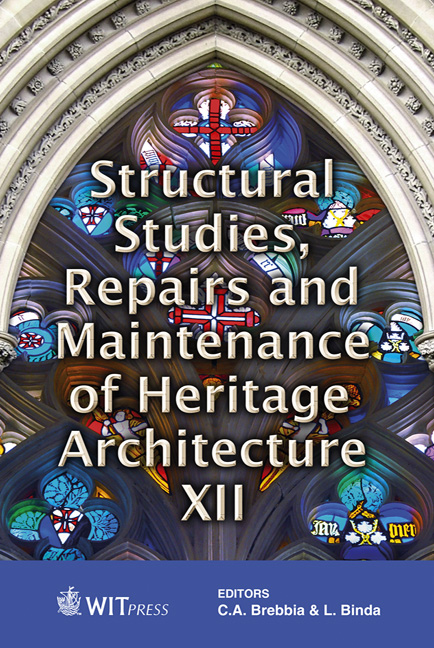Structural Performance Evaluation Of Historical Landmark (Yokufu-en) Built In The Taisho Period
Price
Free (open access)
Transaction
Volume
118
Pages
12
Page Range
735 - 746
Published
2011
Size
1153 kb
Paper DOI
10.2495/STR110611
Copyright
WIT Press
Author(s)
S. Nagashima, M. Mochizuki, M. Suzuki, T. Ninomiya, R. Tamura, T. Nakano & M. Kinoshita
Abstract
The main building of Yokufu-en has been designated as a \“Selected Historical Building of Tokyo Metropolitan Government,” built after the 1923 Great Kanto Earthquake in the Taisho period. This building was designed by Yoshikazu Uchida, a famous university professor and his assistant. As a result of the study, the building has enough strength of structure, and the concrete shows sufficient compressive strength. However, as the 3rd story has a high eccentric factor it is necessary to be reinforced for earthquake resistance. The reinforcement plan was designed for obtaining a prescribed seismic capacity performance in Japan. Keywords: seismic evaluation, historical-landmark, structural performance evaluation, Yoshikazu Uchida. 1 Introduction The main building of Yokufu-en (the main building of current Yokufukai, a social welfare corporation) reported in this paper was a hospital which was built to protect people who were affected by the 1923 Great Kanto Earthquake. It was designed by Yoshikazu Uchida and his assistant Tatuto Toki in 1925 and completed in 1926 [1]. It is a valuable building designated as a \“Selected Historical Building of Tokyo Metropolitan Government” in 2001. The building is currently used as offices. Structural and seismic evaluations were conducted to check its seismic capacity. This paper reports the details of the technical data used when the building was designed including the Urban Building Law, and the
Keywords
seismic evaluation, historical-landmark, structural performanceevaluation, Yoshikazu Uchida




